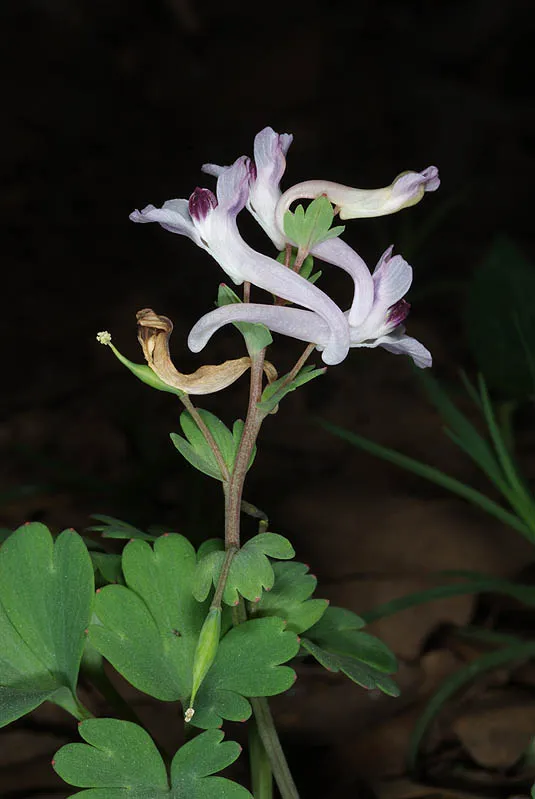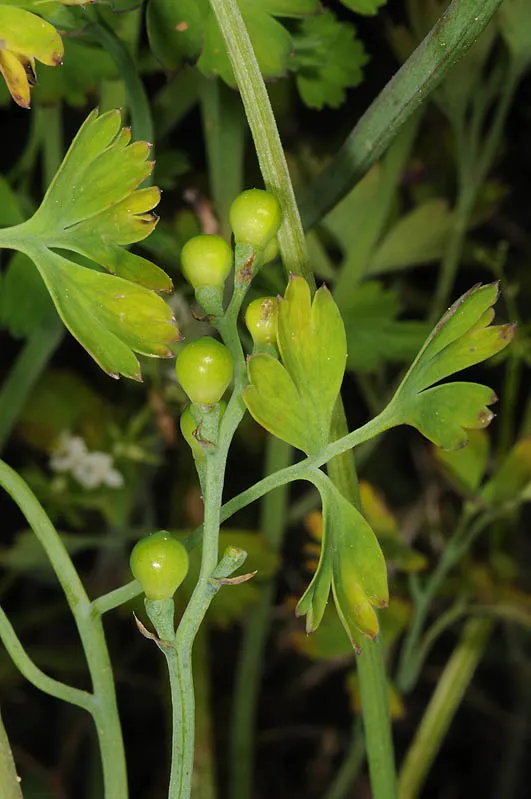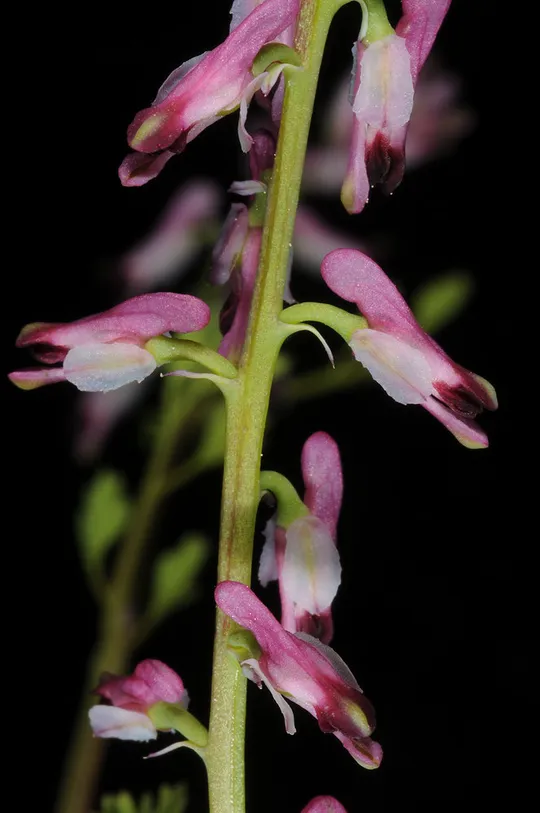Aegyptian Horned Cumin
Hypecoum aegyptiacum
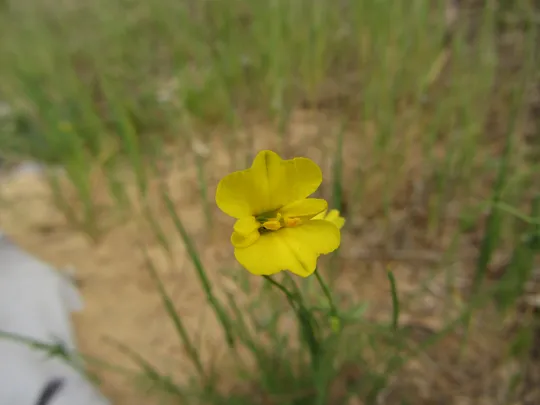
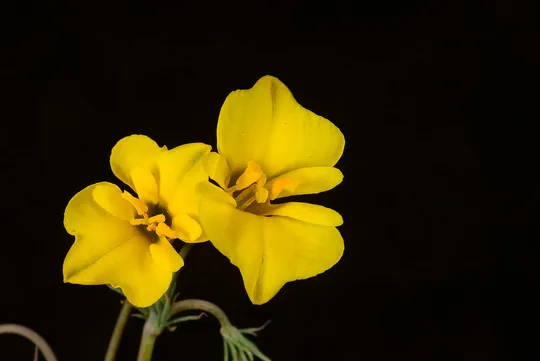
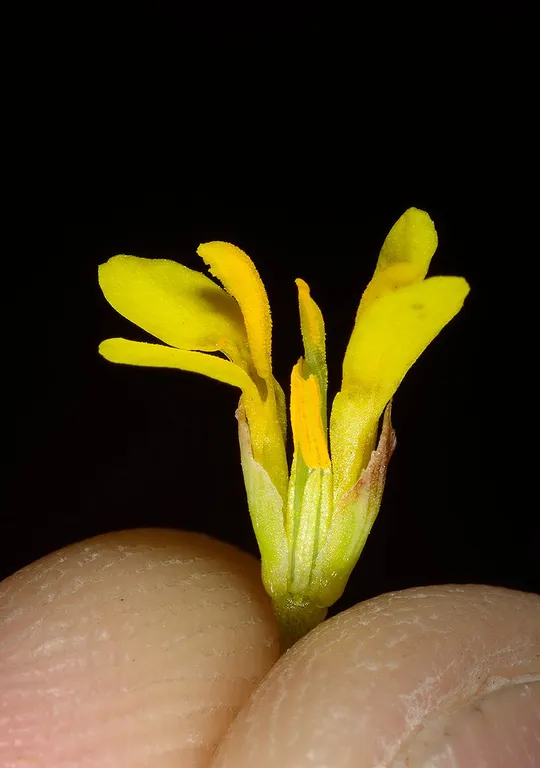
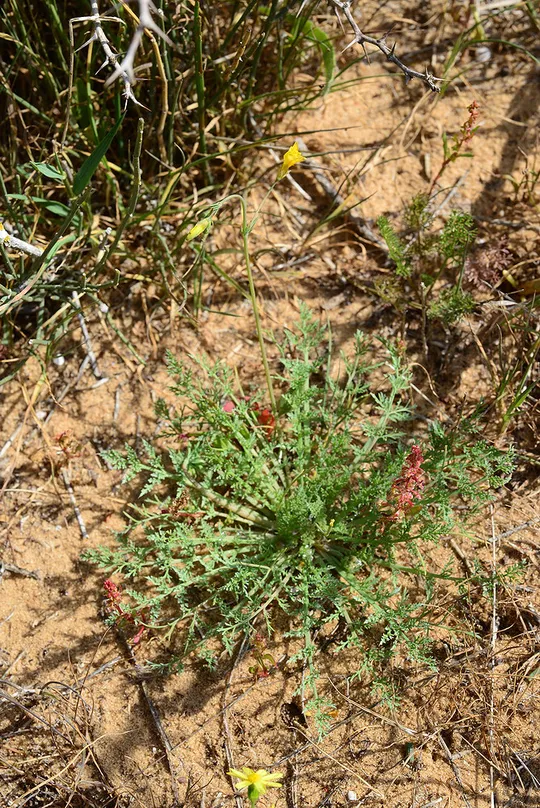
Hypecoum aegyptiacum was collected a
few times in the northern Negev (10 km south of Be'er Sheva) in 1928, in Wadi
Sekher in 1971 (Avinoam Danin) and from a wadi north of Yeroham by Yehuda Segal
in 1957. (In the distribution map the species appears in the northern Negev
although it is extinct, because it was still found in this region in 1971). H.
aegyptiacum was also collected twice from Gaza and once from Rafi’ah between
the 1920s and 1940s. Despite all our efforts, the species was never found again.
The identification of the specimens from the Shitta Malbina Nature Reserve in Ashdod
is questionable because of its small flowers. Reports in recent years regarding
the presence of H. aegyptiacum plants in the Arava are probably mistaken.
Sandy
plains and hills of shifting coastal sand with Retama raetam, in
semi-desert and coastal areas.
The genus Hypecoum has 20 species found mainly in
the Mediterranean Basin and the Middle East. Some species range east to central
Asia and China and south to the Sahara and Arabian deserts. The genus has an
unusual flower and is now generally associated with the Papaveraceae family. H.
aegyptiacum is an intermediate stage between the Papaveraceae and the
Fumariaceae families. Its flower shape with its bilateral symmetry is similar
to that of the Fumariaceae, but its fruit capsule is close to the Papaveraceae.
In the past H. aegyptiacum was associated with an independent family –
the Hypecoaceae, but this approach is not accepted today (Heywood, 2007). Some Hypecoum
species are close and extremely similar and hard to tell apart. Such are H.dimidiatum and H.procumbens
that are common in our region.
H. aegyptiacum has not been observed for many years in Israel. Herbarium
sheets from Rafah (Rafi’ah) and the western Negev indicate well-developed plants
that have particularly large flowers. In 2009, a new population was found in
the Shitta Malbina Nature Reserve in Ashdod; however the flowers of these
plants were small. This may be a transition form between H. aegyptiacum
and H.dimidiatum. In conclusion H. aegyptiacum is an
extremely rare species, about which very little is known. In the Flora of Egypt
(Boulos, 1999) too, the published description is identical to the earlier
description from the Flora Palaestina.
Hypecoum aegyptiacum was collected a
few times in the past in the western Negev and from the Gaza coast and has not been
found since at the original sites or in the area. It apparently disappeared
from the sites where had been previously found and there is doubt as to its existence
today. There is no information on the past populations nor are the reasons for
its disappearance from the sites where it had been collected in the past clear.
There is also a lack of information regarding its global threat status.
Attempts should be made to locate Hypecoum
aegyptiacum populations in the sands of the southern coastal plain in order
to verify its existence in Israel.
Hypecoum aegyptiacum is found in Egypt in the
Mediterranean region, in the Nile region and in Sinai; it was also found in the
Gaza Strip and the western Negev in Israel.
Hypecoum aegyptiacum is an annual plant of the southern coastal plain sands that was collected only in the last century; there is no clear evidence today that it exists in Israel. Efforts should be made to try to locate it again or to verify that it is extinct.
Current Occupancy Map
| 1000 squre meter pixel | 5000 squre meter pixel | 10000 squre meter pixel | |
|---|---|---|---|
| number of observations | 0 | 0 | 0 |
| in total pixels | 0 | 0 | 0 |
| Family | Fumariaceae |
| Classification | On the endangered species list |
| Ecosystem | Desert |
| Chorotype | Saharo – Arab |
| Conservation Site |
| Rarity |
1
6
6
|
|---|---|
| Vulnerability |
0
3
4
|
| Attractiveness |
0
0
4
|
| Endemism |
0
0
4
|
| Red number |
1
5.3
10
|
| Peripherality | 1 |
| IUCN category | DD EW EX LC CR EN VU NT |
| Threat Definition according to the red book | Critically endangered |
 Based on:
Based on:
